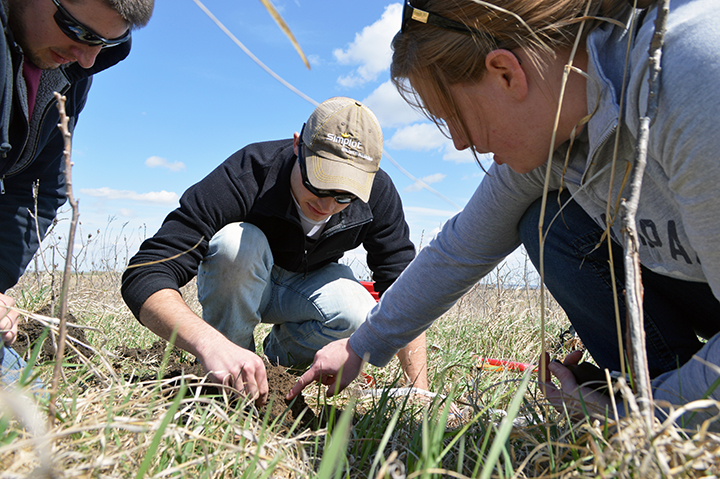
Field season is upon the School of Natural Resources.
As the semester winds down, students are heading out to University of Nebraska off-campus sites to complete their field work and gain real-world experience of the topics discussed in the classroom.
SNR lecturer Rebecca Young’s pedology class is just one of them, but on Wednesday, and every class period until finals, her students will work in groups of three to map the soils at Nine-Mile Prairie at the edge of Lincoln.
Strong winds and bright sun didn’t deter them Wednesday. The three groups each chose a different section of the prairie where they will do a transect and sampling in other important sites in the prairie.
After digging 2-foot-deep test holes, the students noted the depths where the soil shifted in color, texture or structure. These layers are called soil horizons. In their field books, the students noted the color using their Munsell soil color charts; described the texture; noted the shape of the soil aggregates; tested for the presence of carbonates with hydrochloric acid; and more.
Students would spend about 30 minutes at each of their dig sites, describing the soil profile and interpreting the landscape.
“People in a wide variety of professions use soil maps, as they are a way to show the diversity of soil types and soil properties across a landscape. Soil maps are frequently used for agricultural management, environmental protection, land evaluation, restoration projects and planning, and other similar types of projects,” Young said. “Students that take part in this course typically come from a wide range of majors in IANR, and it’s always interesting to observe them working together in small groups, discussing their interpretations and developing an appreciation for both soils and how they form.”
Nine-Mile Prairie is a 230-acre tallgrass prairie, one of the largest intact tracts of tallgrass prairie left in the Midwest. In addition to untouched prairie, the site offers more than 392 vascular plant species and more than 80 bird species for study.
More details at: http://go.unl.edu/odqt